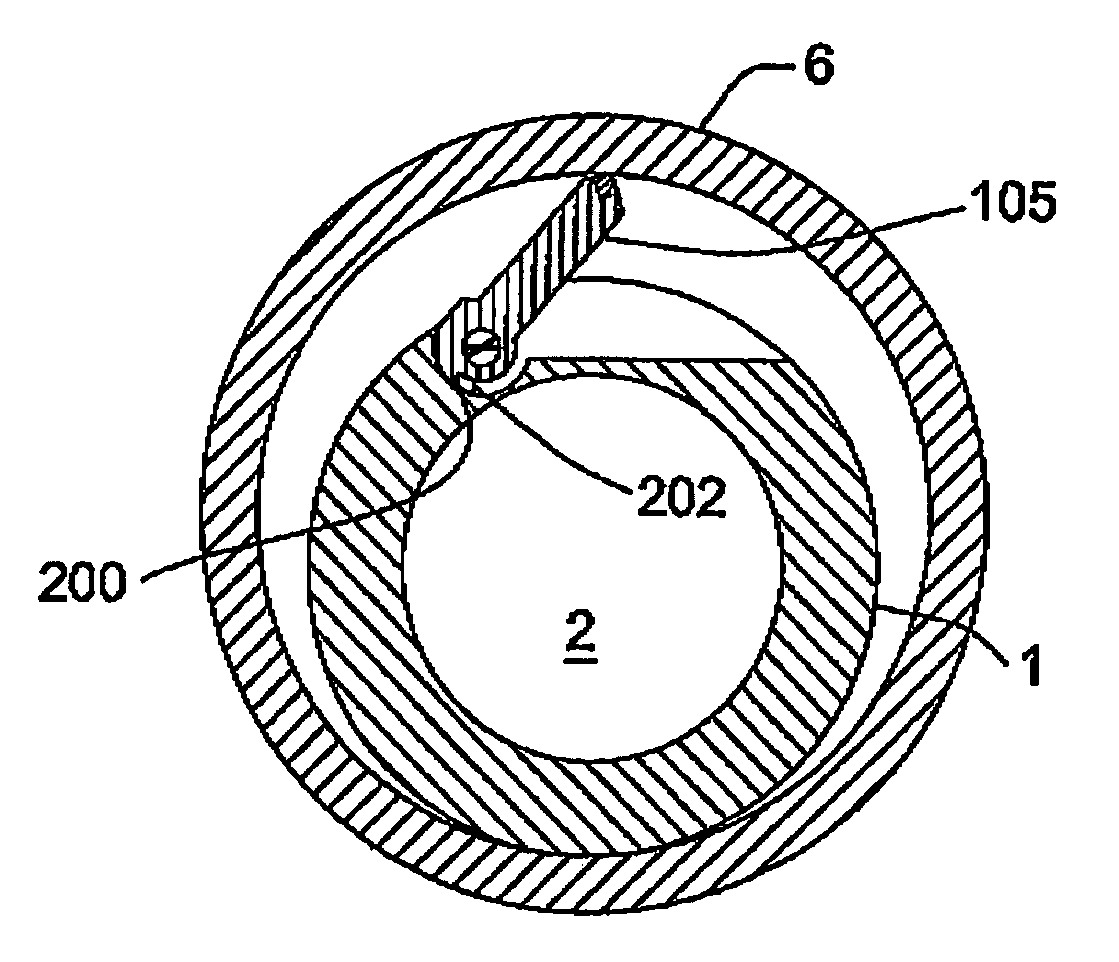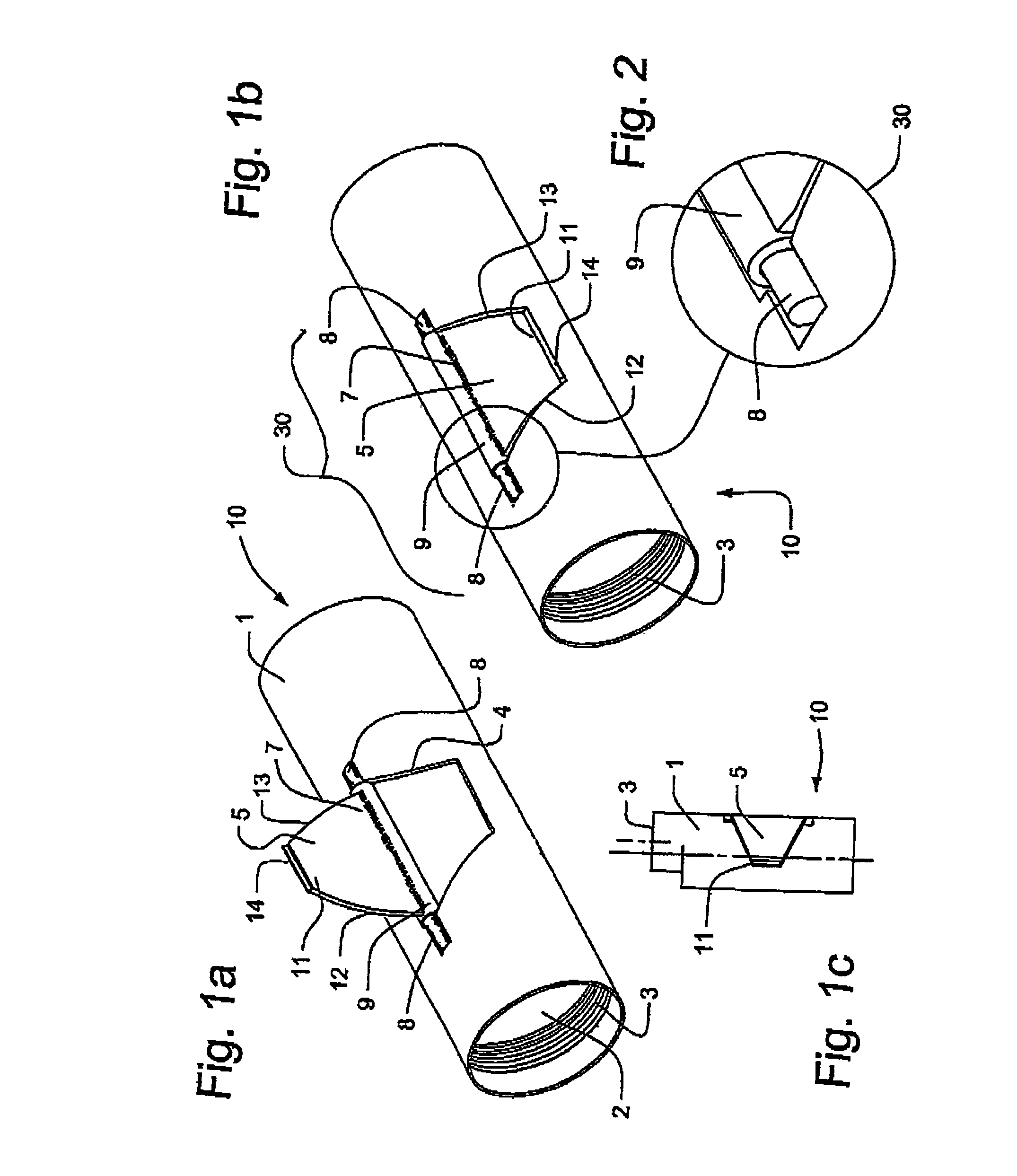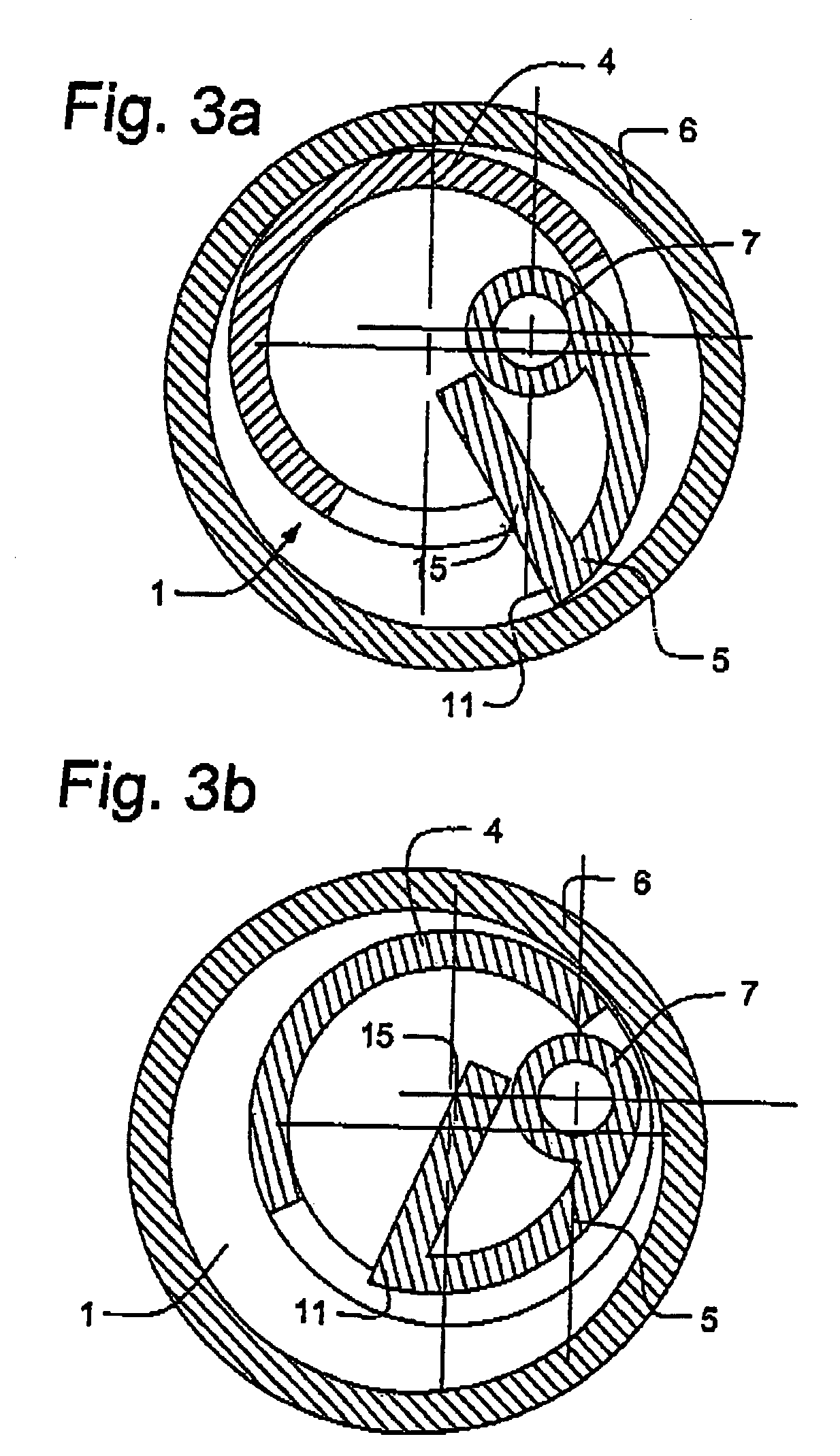Anti-rotation tool
a tool and anti-rotation technology, applied in the field of anti-rotation tools, can solve the problems of loss of pump or tubing string, and achieve the effect of preventing overextension of the jaw during assembly, limiting the maximum rotation of the jaw, and limiting the effective diameter of the tool
- Summary
- Abstract
- Description
- Claims
- Application Information
AI Technical Summary
Benefits of technology
Problems solved by technology
Method used
Image
Examples
first embodiment
[0033]More particularly, in the first embodiment and having reference to FIGS. 1a, 1b, 3a and 3b a portion of the housing wall 4 is cut through to the bore 2 to form a trapezoidal flap or jaw 5. The jaw 5 has an arcuate profile, as viewed in cross-section, which corresponds to the curvature of the housing wall 4. Accordingly, when stowed, the jaw 5 projects minimally from the tubular housing 1 and avoids interfering with obstructions while running into the casing 6 (FIG. 3b).
[0034]Referring to FIGS. 1a–2, the jaw 5 is pivoted to the housing 1 along a circumferential edge 7 at hinge 30. The jaw 5 has a radial tip edge 11.
[0035]Hinge 30 comprises tubing 9 welded to the hinge edge 7 with a pin 8 inserted therethrough. Pin 8 is welded to the housing wall 4 at its ends. In a mirrored and optional arrangement (not shown), the jaw's hinge edge 7 has axially projecting pins and the housing wall is formed with two corresponding and small tubular sockets for pinning the pins to the housing an...
second embodiment
[0043]Referring back to FIG. 1c, in an optional second embodiment, the threaded end 3 can be formed off-center to the axis of the housing 1, so that when the radial tip 11 engages the casing 6, the axis of the threaded end 3 is closer to the center of the casing 6 than is the axis of the housing 1. This option is useful if the PC Pump or other downhole tool requires centralization.
[0044]In the first and second embodiment, the jaw 5 is conveniently formed of the housing wall 4, however, this also opens the bore 2 to the wellbore. If the tool 10 threaded to the bottom of a PC Pump, this opening of the bore 2 is usually irrelevant. However, where the bore 2 must support differential pressure, such as when the PC Pump suction is through a long fluid conducting tailpiece, or the tool 10 is secured to the top of the PC Pump and must pass pressurized fluids, the bore 2 must remain sealed.
third embodiment
[0045]Accordingly, and having reference to FIGS. 4–5b, in a third embodiment, the housing wall 4 is not interfered with so that the bore 2 remains separate from the wellbore. This is achieved by mounting the jaw 5 external to the housing 1. The profile of jaw 5 conforms to the housing wall 4 so as to maintain as low a profile as possible when stowed (FIG. 5b).
[0046]More specifically as shown in FIG. 4, as was the case in the first embodiment, the profile of the jaw 5 corresponds to the profile of the housing wall 4. In this embodiment however, the jaw 5 is pivoted along its circumferential edge 7 at a piano-type hinge 30 mounted external to the housing wall 4. Corresponding sockets 9 are formed through the circumferential edge of the jaw and the hinge 30. Pin 8 is inserted through the sockets 9. A carbide insert 14 is fitted to the radial tip edge 11 of the jaw 5.
[0047]In operation, as shown in FIG. 5a, if the tool 1 is rotated clockwise as viewed from the top, the radial tip edge 1...
PUM
 Login to View More
Login to View More Abstract
Description
Claims
Application Information
 Login to View More
Login to View More - R&D
- Intellectual Property
- Life Sciences
- Materials
- Tech Scout
- Unparalleled Data Quality
- Higher Quality Content
- 60% Fewer Hallucinations
Browse by: Latest US Patents, China's latest patents, Technical Efficacy Thesaurus, Application Domain, Technology Topic, Popular Technical Reports.
© 2025 PatSnap. All rights reserved.Legal|Privacy policy|Modern Slavery Act Transparency Statement|Sitemap|About US| Contact US: help@patsnap.com



